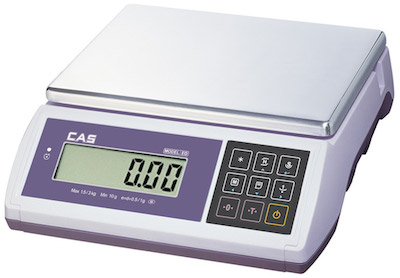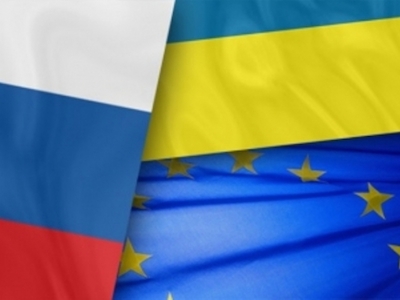April 2015
Взвешивание данных таблиц сопреженности в R
30/04/15 21:22 Относится к категории: Анализ данных | R

2 Comments
Geopolitical Orientation of Ukraine’s Population: Before and After the Conflict with Russia
The article is intended for the annual academic edition "Ukrainian Society. Monitoring Social Changes" of the Institute of Sociology of the NAS of Ukraine.

Units of analysis and variables. Respondents from the Autonomous Republic of Crimea are excluded from the data for 2012 and 2013 to ensure the comparability of results with the corresponding data for 2014. In order to achieve the objective of the article three variables of monitoring were used: a) the attitude of the respondents to the alliance with Russia and Belarus; b) the attitude of the respondents to joining the European Union; c) the attitude of the respondents to joining the NATO.
Main results. An important feature of Ukrainians’ attitude to further development is their ambiguity and ambivalence. A part of respondents (this share was particularly large in 2012) is equally positive about the alliance with Russia and Belarus as well as about joining the EU. In addition, there is a considerable part of those uncertain. It is this group of people (ambivalent and uncertain) that is the most interesting in terms of which category they should be finally allocated to – those of eastern orientation, those of western or those of their own.
Читать дальше...
Data science (3)
Europe (2)
Geopolitics (2)
Infographics (1)
R (26)
Russia (2)
SPSS (2)
Ukraine (2)
Акционализм (1)
Анализ данных (27)
Аномия (1)
Выборка (1)
Выступления (3)
Геополитика (12)
Гражданское общество (2)
Демократизация (1)
Европа (4)
Интернет ресурсы (1)
Инфографика (8)
Исследовательские дизайны (1)
Историческая социология (10)
История социологии (5)
Киберспорт (1)
Книги (7)
Массивы (3)
Методология социальных исследований (1)
Методология социологических исследований (2)
Научная жизнь (3)
Новости (6)
Обратная связь (1)
Персоналии (3)
Православные конфессии в Украине (1)
Президентская власть (1)
Психологический дистресс (18)
Психология (5)
Публицистика (2)
Революция (1)
Результаты исследований (28)
Религия (3)
Россия (2)
Согласование концептов (4)
Социальная гетерогенность (1)
Социальная работа (1)
Социологическая теория (6)
Социологические тесты (1)
Социологическое образование (5)
Теория конфликта (2)
Теория социального измерения (8)
Украина (9)
Учебные планы (2)
Философия (1)
Шкалирование (36)
Экономика (1)
Эмпирическая социология (46)
Europe (2)
Geopolitics (2)
Infographics (1)
R (26)
Russia (2)
SPSS (2)
Ukraine (2)
Акционализм (1)
Анализ данных (27)
Аномия (1)
Выборка (1)
Выступления (3)
Геополитика (12)
Гражданское общество (2)
Демократизация (1)
Европа (4)
Интернет ресурсы (1)
Инфографика (8)
Исследовательские дизайны (1)
Историческая социология (10)
История социологии (5)
Киберспорт (1)
Книги (7)
Массивы (3)
Методология социальных исследований (1)
Методология социологических исследований (2)
Научная жизнь (3)
Новости (6)
Обратная связь (1)
Персоналии (3)
Православные конфессии в Украине (1)
Президентская власть (1)
Психологический дистресс (18)
Психология (5)
Публицистика (2)
Революция (1)
Результаты исследований (28)
Религия (3)
Россия (2)
Согласование концептов (4)
Социальная гетерогенность (1)
Социальная работа (1)
Социологическая теория (6)
Социологические тесты (1)
Социологическое образование (5)
Теория конфликта (2)
Теория социального измерения (8)
Украина (9)
Учебные планы (2)
Философия (1)
Шкалирование (36)
Экономика (1)
Эмпирическая социология (46)
January 2021
September 2020
March 2019
September 2018
August 2018
April 2018
March 2018
December 2017
November 2017
October 2017
September 2017
August 2017
July 2017
June 2017
May 2017
April 2017
March 2017
February 2017
January 2017
December 2016
November 2016
October 2016
September 2016
August 2016
July 2016
June 2016
May 2016
April 2016
March 2016
February 2016
January 2016
December 2015
November 2015
October 2015
September 2015
August 2015
July 2015
June 2015
May 2015
April 2015
March 2015
February 2015
August 2014
July 2014
June 2014
May 2014
April 2014
March 2014
February 2014
January 2014
December 2013
November 2013
October 2013
September 2013
December 2020
November 2020
October 2020September 2020
August 2020
July 2020
June 2020
May 2020
April 2020
March 2020
February 2020
January 2020
December 2019
November 2019
October 2019September 2019
August 2019
July 2019
June 2019May 2019
April 2019March 2019
February 2019
January 2019
December 2018
November 2018
October 2018September 2018
August 2018
July 2018
June 2018
May 2018April 2018
March 2018
February 2018
January 2018December 2017
November 2017
October 2017
September 2017
August 2017
July 2017
June 2017
May 2017
April 2017
March 2017
February 2017
January 2017
December 2016
November 2016
October 2016
September 2016
August 2016
July 2016
June 2016
May 2016
April 2016
March 2016
February 2016
January 2016
December 2015
November 2015
October 2015
September 2015
August 2015
July 2015
June 2015
May 2015
April 2015
March 2015
February 2015
January 2015
December 2014November 2014
October 2014
September 2014August 2014
July 2014
June 2014
May 2014
April 2014
March 2014
February 2014
January 2014
December 2013
November 2013
October 2013
September 2013